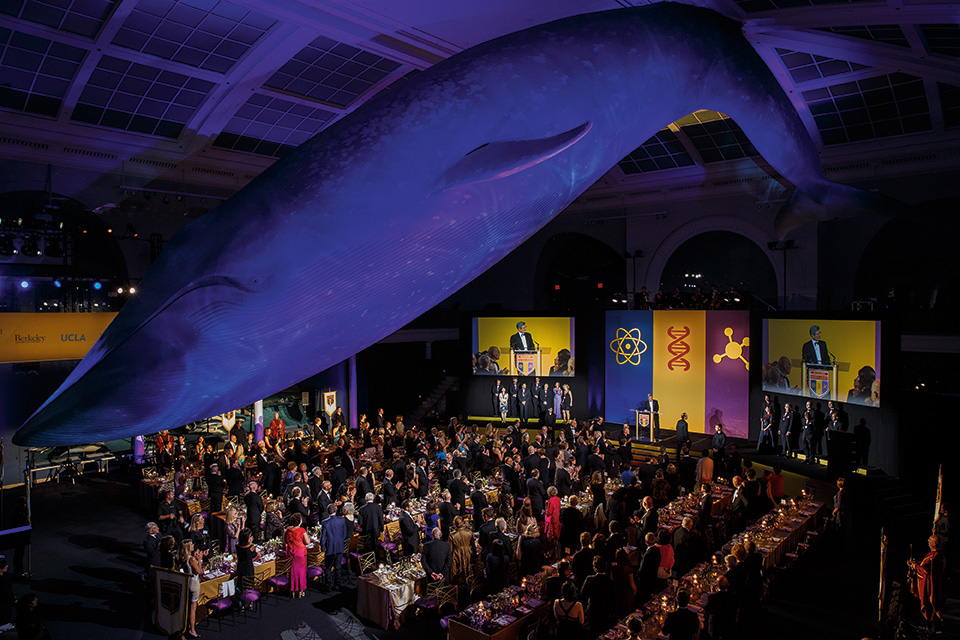The 2019 Blavatnik Awards for Young Scientists National Laureates
Our showcase of the inspiring honorees breaking new ground in life sciences, chemistry and physical sciences.
Published May 1, 2019
By Carina Storrs, PhD
Academy Contributor
Life Sciences Laureate
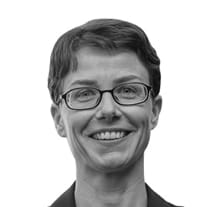
Heather J. Lynch, PhD, Stony Brook University
A pursuit of penguins leads to new territories in technology
It may be hard for penguin enthusiasts to believe, yet Heather Lynch PhD says the “most fun part of the entire year” is not the four months a year she and her team spend in Antarctica, but rather the time spent pouring over the reams of data when she returns. Lynch was originally drawn to penguins as a post-doc at the University of Maryland because of the challenge of studying them.
Lynch, now an Associate Professor at Stony Brook University, is tackling the fundamental questions of how many penguins are there and where exactly are they? Those may seem like simple questions, but they are stymied by data shortcomings, such as not having precise location data from on-the-ground surveys of the flightless, tuxedo-donning birds.
To subvert the treacherous Antarctic environment, Lynch turned to the wealth of NASA satellite imagery of the Antarctic that dates back decades. She and a colleague developed algorithms that scan the thousands of coastal images for signs of penguins revealed by their pink-hued guano (bird feces). Then, when they get tipped off to the presence of a large colony of penguins, they bring glacial-ready drones to the areas to take high-resolution pictures for exact headcounts.
The Adélie penguins
One of the biggest finds was a supercolony of about 1.5 million Adélie penguins on the Danger Islands right off the tip of the Antarctic Peninsula, which stretches toward South America. No one knew this colony existed — Lynch didn’t believe the algorithm at first, until she could confirm it with other satellite imagery.
She and her lab have also discovered much smaller colonies of chinstrap and gentoo penguins on the nearby Aitcho Islands. Without Lynch’s mathematical techniques and use of satellite technologies to detect guano, these colonies of penguins may have never been discovered.
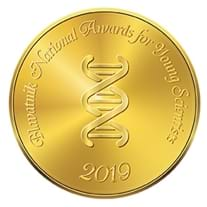
Thanks to this multi-pronged approach, Lynch can now pride herself on the ability to locate nearly all of the penguin colonies in the Antarctic and is excited about the possibility of discovering even more colonies. Lynch’s game-changing ability to apply mathematical modeling to ecological data collected from satellites, aerial drones and field work is what earned her the title of 2019 Blavatnik National Awards Laureate in Life Sciences.
Lynch has always had one foot in the technological side. She was close to getting her PhD in physics when she “came up for air,” decided she wanted to apply her problem-solving zest toward environmental issues, and switched to a PhD program in biology.
Developing Skills in Statistics and Programming
However, she thinks the expertise that she acquired in mathematical modeling while working on her physics PhD has been the secret to her success. She advises students interested in pursuing any STEM field to develop some statistical and programming abilities.
“[They] are that all-access pass,” Lynch says. “There is not a lab on the planet that does not need people with those skills.”
Although Lynch’s discoveries have been welcome news for ecologists and penguin lovers alike, they can appear to belie the peril facing these birds due to climate change.
“All of these other populations, even other Adélie penguins, are crashing,” Lynch says.
A big part of her research focuses on developing models to understand why the Danger Island colony is flourishing, while the Adélie penguins on the western side of the Antarctic Peninsula are declining.
Implications for Conservation and the Impact of the Award
It almost goes without saying that Lynch’s research has implications for conservation.
“When we found the Danger Island populations, the first email I sent was to the people who were designing the Marine Protected Area in the region,” Lynch recalls. The Danger Islands had not been considered an important area to protect, but in what Lynch calls a “dream scenario,” policy makers expanded the area to include the islands after she told them about the Adélie supercolony.
Lynch is excited that the Blavatnik Award will bring attention to the recent technological advances in the field of ecology. The synergistic effects of Lynch’s methods will have a wide-ranging and critical impact in the fields of ecology and conservation biology in the face of impending, human-induced mass extinctions. Lynch and her lab have already expanded her methods to evaluate Antarctic seal and whale populations, and scientists can use her methods in the hope of saving other species all over the world.
Chemistry Laureate
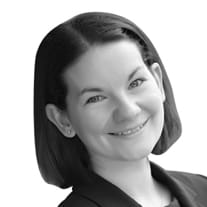
Emily Balskus, PhD, Harvard University
Cracking the mysteries of the human microbiome
The first time that Emily Balskus, PhD worked with a microbiome, the term for communities of bacteria that live in our bodies and all around us, she was knee-deep in the salt marshes off the southern coast of Cape Cod, collecting bacteria.
Things got pretty messy, but the experience helped convince Balskus — who was then conducting postdoctoral research in chemical biology at Harvard Medical School — that she wanted to bring her chemistry expertise to bear on the biggest questions about the human microbiome.
Up until those marshy waters, Balskus was doing, as she puts it, “pretty conventional” chemistry. But early on during her postdoctoral training she attended a seminar about the Human Microbiome Project, which would set out to catalogue the microbes living on and within us. It opened her eyes to the shocking fact that scientists knew almost nothing about what these bacteria were actually doing, and how they affected our health.
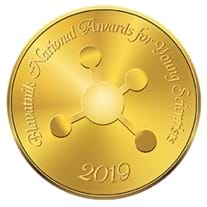
“I couldn’t believe that we could be living so closely with so many microbes, that we had shared evolutionary history with them, and there was so much we didn’t know about them,” Balskus recalls.
Understanding the Microbiome in our Gut
Much of what we now know about the goings-on of the microbiome in our gut — for example, how certain bacterial residents can increase the risk of heart disease or thwart the activity of the medications we take — is thanks to the research group that Balskus has been leading at Harvard University since 2011.
For her work getting to the bottom of microbial mysteries, Balskus was named the 2019 Blavatnik National Awards Laureate in Chemistry, which Balskus says is “wonderful” and “very humbling.”
One of the most exciting discoveries of the Balskus lab is connecting how bacteria in the gut microbiome may increase the risk of colorectal cancer. It had been known for more than a decade that certain strains of Escherichia coli (E. coli) make a toxic molecule, called colibactin, and that these bacterial strains are more likely to be found in the gut of people with colorectal cancer.
Understanding the Chemical Components
Balskus and her team focused on determining the chemical makeup of the mysterious colibactin molecule, which had been challenging for other chemists to isolate and characterize. The difficulty of studying this molecule using more conventional approaches made her consider whether her unique perspective might provide another path.
Balskus’ team explored how colibactin was produced in the gut without knowing its complete structure. They eventually discovered that the colibactin molecule contains a structure called a cyclopropane ring, which is known to cause DNA damage that can lead to cancer-causing mutations. Importantly, her team showed that exposing human cells in the lab to the toxic E. coli strain led to a specific type of cyclopropane-dependent DNA damage, whereas cells exposed to harmless strains of E. coli showed no signs of similar DNA damage.
In future studies, she hopes to determine whether this type of DNA damage can be seen in cells obtained from biopsies of colorectal cancer patients, to confirm whether this toxic E. coli is indeed responsible for increasing cancer risk.
Balskus credits her postdoctoral advisor, Christopher Walsh, MD, PhD for suggesting she take the fateful trip to the salt marshes, which was part of a summer microbiology course held at the Marine Biological Laboratory in Woods Hole, Mass. This course equipped her with the tools of microbiology and expertise that she continues to use to probe the human microbiome.
Combining Chemistry and Microbiome Research
Today, Balskus is a Professor of Chemistry and Chemical Biology at Harvard University, and a leader in bringing the worlds of chemistry and microbiome research together. This spring she helped organize the first scientific conference on the chemistry of the human and other microbiomes.
“Both [fields] are very excited about this intersection,” Balskus says. She is also venturing into other scientific fields, such as genetics, and exploring how chemistry’s tools can advance other areas of biological research.
Balskus hopes to use the Blavatnik Award funds to promote women and other underrepresented groups in science. She recognizes how much her female science teachers at the all-women’s high school and the small liberal arts college she attended encouraged her and were role models for her. Many young women are not so fortunate.
“It is not one thing that makes it hard, it is a bunch of things that make it difficult for women to feel like they belong in science,” Balskus says.
Physical Sciences & Engineering Laureate
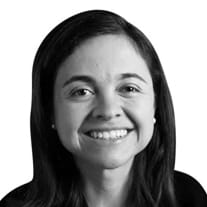
Ana Maria Rey, PhD, University of Colorado Boulder
Building the world’s most precise atomic clock
Ana Maria Rey, PhD fell for physics in high school, the moment she realized she could use mathematical equations to predict how a ball will move. It was an easy love affair, as Rey flew through physics problems for fun.
But at the university she attended in her native Colombia, a professor challenged the students with such long physics exams that students had no time to perform detailed calculations. This professor, who Rey considers her first role model, taught them to rely on intuition instead, which could only be acquired through intensive study of the subject.
It is a lesson that Rey has carried with her throughout her career. Over the course of her PhD studies at the University of Maryland, through two periods of postdoctoral training, and now as a Professor of Physics at the University of Colorado Boulder, Rey has delved deep into the world of quantum mechanics.
Diving into Quantum Mechanics
Quantum mechanics describes the behavior of the smallest particles of matter: the atoms and sub-atomic particles that make up balls and every other material on Earth. Just like her early days with physics, Rey is explaining the behavior of the quantum world using mathematical models. But now she is the one developing the models, in groundbreaking work that earned her the honor of being named the Blavatnik National Awards Laureate in Physical Sciences & Engineering this year.
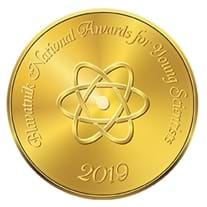
“Understanding [atomic and sub-atomic] behavior is really, really important because it can lead to technological development,” Rey says.
Although her research is theoretical, its applications are tangible and far-ranging, from creating GPS (global positioning system) that can provide more accurate location data and quantum computers that would be thousands of times faster than today’s machines, to ultimately enabling the direct measurement of gravitational waves, which are ripples in the so-called fabric of the universe.
Building a More Precise Atomic Clock
At the heart of all these possibilities, and the crux of Rey’s models, is the ability to build a more precise atomic clock, which can measure much smaller units of time than modern clocks — as short as one billionth of a billionth of a second. As Rey explains, the pendulum of an atomic clock is laser light, and the thing that measures each swing of the pendulum is atoms.
The problem that scientists have to understand, and ideally control, is how the atomic timekeepers move when they are zipping around and colliding with each other. Because of Rey’s equations, they are getting closer to that goal. She credits the physicists she collaborates closely with at JILA, where she is a Fellow, for conducting the breakthrough experiments with ultra-cold atoms trapped by lasers, making them slower and easier to track, for informing her calculations.
Rey says the funding and recognition that come with the Blavatnik Award will allow her to push farther into what she calls “the most exciting part of the work.” Although her team has already given the world its most precise atomic clock, that is nothing compared to what they could achieve if they could entangle, or link together, atoms in such a way that they behave as one unit.
Entanglement, which has been shown by allowing atoms to interact and then separating them, would eliminate the noise that throws off atomic clocks.
“This is the holy grail,” Rey says, adding that, “we should be able to see what the universe is made of,” such as mysterious dark matter.
Driven By Passion
Rey believes the key to her success in theoretical physics is loving what she does and working hard at it.
“Things are not going to come to you. You might be very smart, but I don’t think it’s enough,” Rey says.
Her other great role model, renowned JILA fellow, Deborah Jin, PhD, who passed away in 2016, showed Rey that it is possible to have a successful scientific career and a happy family life, and generally to be there for people. Rey, who was also selected as a MacArthur Fellow in 2013 and the MOSI Early Career National Hispanic Scientist of the Year in 2014, says “I hope in some way, I can share the same type of help with young women scientists.”
